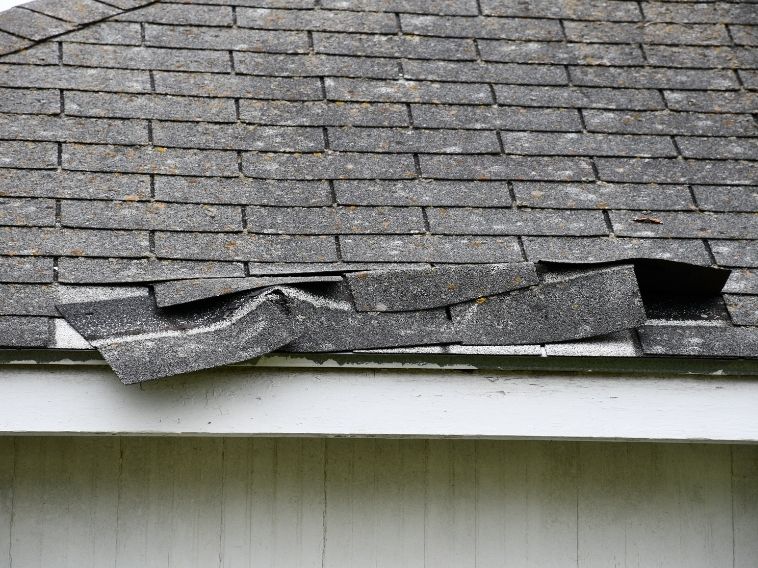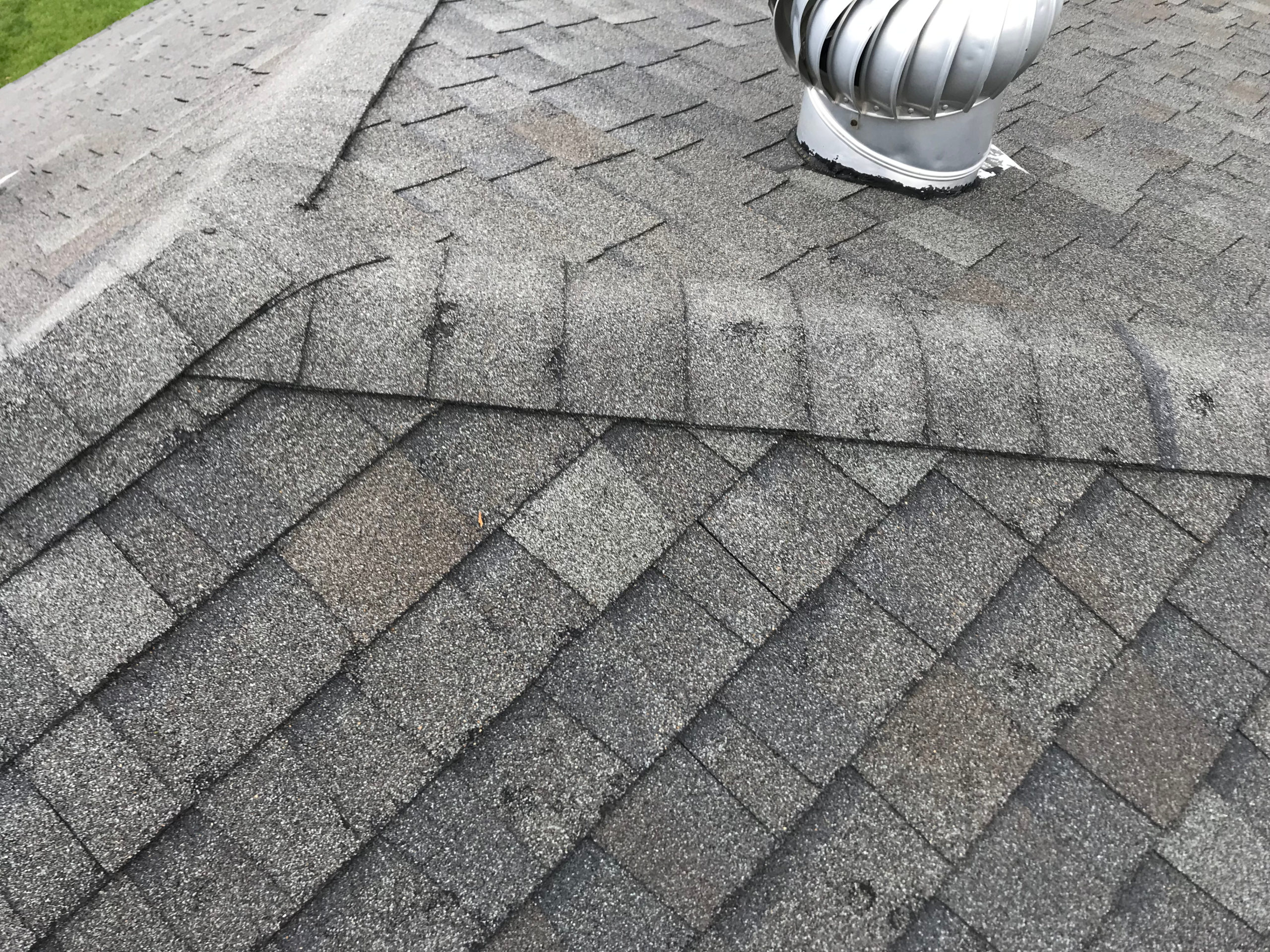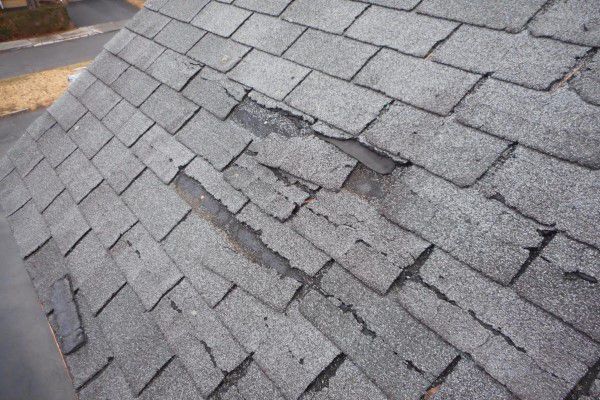
Have you ever seen a hailstorm in your neighborhood? It can be terrifying to watch how quickly the sky turns into a downpour of ice. Many ways hailThere are many ways that hail damage on your roof can go unnoticed, so it’s essential to know how to spot it. This blog post will discuss how to tell if you have hail damage and take the steps once you find out.
Hail: What Is It, and How Does It Form?
Hail is formed when drops of water freeze together in the cold upper regions of thunderstorm clouds. Generally, hail begins to form when an updraft within a cloud pushes air and moisture up into colder temperatures where it can reach its dew point (the temperature at which a gas becomes liquid). At this point, the moisture freezes onto tiny particles like dust or dirt that are already present in the cloud. This forms hailstones made from layers of water attaching and freezing in a large cloud. A frozen droplet begins to fall from a cloud during a storm but is pushed back up into the cloud by a strong updraft of wind. As it falls again towards earth—this time with more force due to gravity—it can slam into other falling hailstones, causing them to grow in size and weight. The hailstone continues this fall until it eventually reaches the earth’s surface—or simply falls apart due to its weight or lack of strength from being battered around by updrafts within the cloud.
Signs of Hail Damage on a Roof: What to Look For
Hail damage can be challenging to identify. It’s important to know what damage looks like, so you can fix it quickly and get back on your feet after a storm.
Hail causes roofing damage in five primary ways: random, haphazard hits with no discernable pattern; black hail hits that look as though they’ve been burned into the material; loss of granules which exposes the underlying felt or shingle beneath them; asphalt shingles appear shiny (most likely from melting); soft-feeling hail strikes almost give off a bruised feeling when touched.
You shouldn’t ignore these signs of weather-related damages, especially if there is more than one occurrence within 30 days’ timeframe because this could indicate an ongoing issue.
Dented gutters, gutter screens, or downspouts
Dented gutters, gutter screens, or downspouts are a good indicator of roof damage. If it’s happening to your gutters, then you have likely experienced hail damage on the rest of the properties as well.
If you notice dents down there and up top, it makes sense to call an expert straight away.
While not always true, any significant roof-top damages will often result in some impacts lower down on gutter systems or even spouts themselves. This visual issue can indicate hail damage has occurred elsewhere too!
Siding and windowsills/casings
Damaged siding and windowsills/casings are a sure sign that hail has hit your property. Damage may not always be visible, but if you notice any loose or chipped siding on the exterior of your home, it’s essential to reach out as soon as possible.
If you have gaping holes in your windowsills/casings, this indicates that hail damage has occurred and needs immediate attention from an expert.

Damage to air conditioners or other outdoor items
Airconditioners or other outdoor items can be a more expensive indication of damage. Damage to the exterior or interior part of an air conditioner usually indicates that hail has hit your property at some point recently.
If you notice any dents on AC units, it’s best not to neglect them and call in for repairs immediately! The longer this goes unfixed, the worse they could get – causing permanent internal damages, which are not only costly but also difficult to repair once covered up by siding or roofing materials.
In addition: If your outside lighting system shows signs of cracking glass lenses, then high winds have likely caused severe enough impacts as well (and again should warrant a call from experts).
Cracks on roof shingles
Asphalt shingles can react differently when struck by hail than, for instance, wood. If you notice cracks on your roof, specifically after a storm, it could be an indicator of damage to the rest of your property as well.
Cracks appear random and haphazardly on different parts of asphalt or composition roofs – whereas, in comparison, patches tend to develop around burned areas and will look more like darker spots with lines running through them (similar to black widow spiders).
Satellite Dish Damage
Satellite dishes are a great way to measure the severity of hail damage on your roof. If you have a satellite dish, it will likely be dented and even broken – if not missing entirely from its mount. Dents, paint chipping, loose components, and broken/displaced pieces of the dish are all vital signs that you have experienced hail damage.
Chipped Paint, Damaged Mailboxes
Take a walk to your mailbox or the exterior of your property. If you notice chipped paint, damaged mailboxes, and other signs that hail has hit it, then a roof inspection is in order!
If you see any of these signs, it’s best to call a professional right away for an inspection. That way, you can determine whether or not your roof has sustained damage and get ahead of the game before even more costly repairs are needed down the road!

Pool Problems
Your pool may have problems after a hailstorm. If you notice chunks of debris floating on the water, that means your roof probably also took a hit from the storm.
In Conclusion
Conclusion paragraph: When hail hits your roof, it can be difficult to tell whether or not you have damage. If so, there are ways to identify the signs of hail injury, and contact Semper Fi Exteriors for a free inspection! We’ll come out and survey the surface area looking for any indications that will help us determine if you need repairs done. You may notice missing shingles or other materials on top of your home, in addition to water spots from leaks caused by ice dams. We know one surefire way when our team sees loose granules near vents under eaves where most people don’t look close enough at their roofs during maintenance checks. Have you had an inspection yet?
